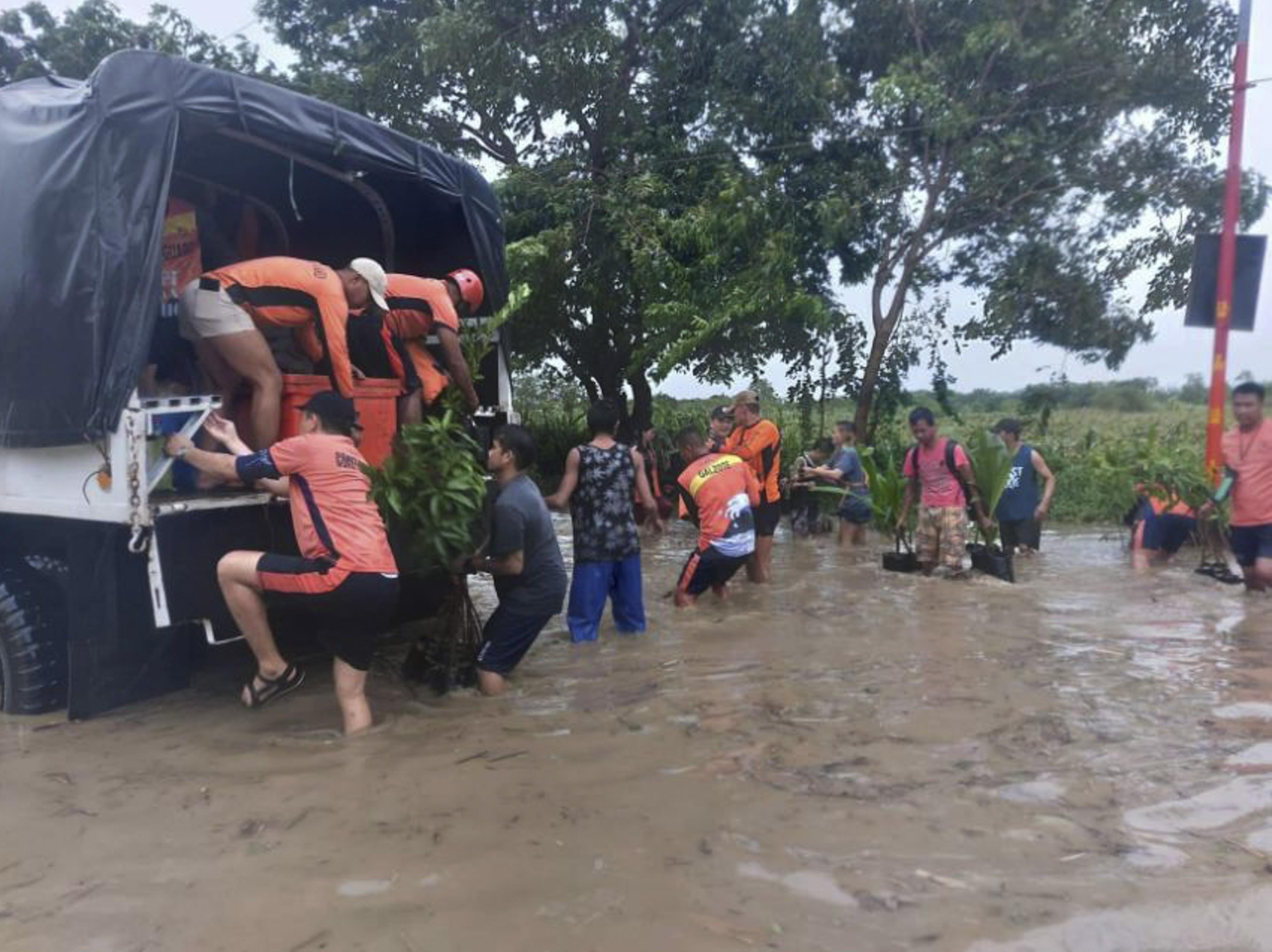 In this handout photo provided by the Philippine Coast Guard, rescuers help residents move to safer grounds in Tuguegarao, Cagayan province, northern Philippines on Aug 23, 2022. (PHOTO / HANDOUT VIA AP)
In this handout photo provided by the Philippine Coast Guard, rescuers help residents move to safer grounds in Tuguegarao, Cagayan province, northern Philippines on Aug 23, 2022. (PHOTO / HANDOUT VIA AP)
MANILA - Typhoon Doksuri had intensified into a super typhoon as it continued threatening the northern Philippine regions, the Philippine state weather bureau said on Tuesday.
The Philippine Atmospheric, Geophysical and Astronomical Services Administration last spotted Doksuri some 310 km east of Cagayan province on the northern Luzon island.
The Philippines is one of the most disaster-prone countries globally, mainly due to its location in the Pacific Ring of Fire and the Pacific typhoon belt. On average, the archipelagic country experiences 20 typhoons yearly, some of which are intense and destructive
The bureau said Doksuri, "nearing its peak intensity," was blowing north-northwestward at 10 km per hour, packing 185 km per hour winds and gusts of up to 230 km per hour.
READ MORE: Xi highlights ties with Philippines
It is forecast to move northwestward within 12 hours before generally turning west-northwestward, the bureau added. On the track forecast, Doksuri is predicted to make landfall or pass very close to the Babuyan Islands between late evening Tuesday and Wednesday afternoon.
READ MORE: Philippines launches its first sovereign investment fund
The bureau issued warning signals to several areas across the Philippines, including Metro Manila, due to the threat of flooding and rain-induced landslides.
The Philippine Coast Guard said over 8,600 passengers, truck drivers, and cargo helpers are stranded in Luzon island and the central Philippines due to the typhoon. At least 73 vessels and 1,518 rolling cargo vessels were stranded in ports.
READ MORE: India, Philippines to strengthen cooperation in various areas
Doksuri is the fifth cyclone to enter the Philippines this year.
The Philippines is one of the most disaster-prone countries globally, mainly due to its location in the Pacific Ring of Fire and the Pacific typhoon belt. On average, the archipelagic country experiences 20 typhoons yearly, some of which are intense and destructive.


